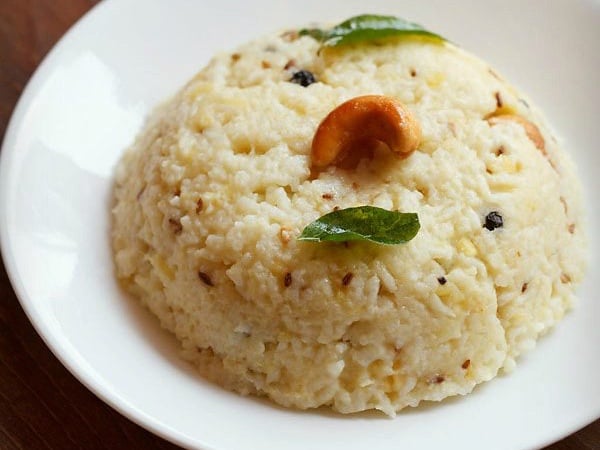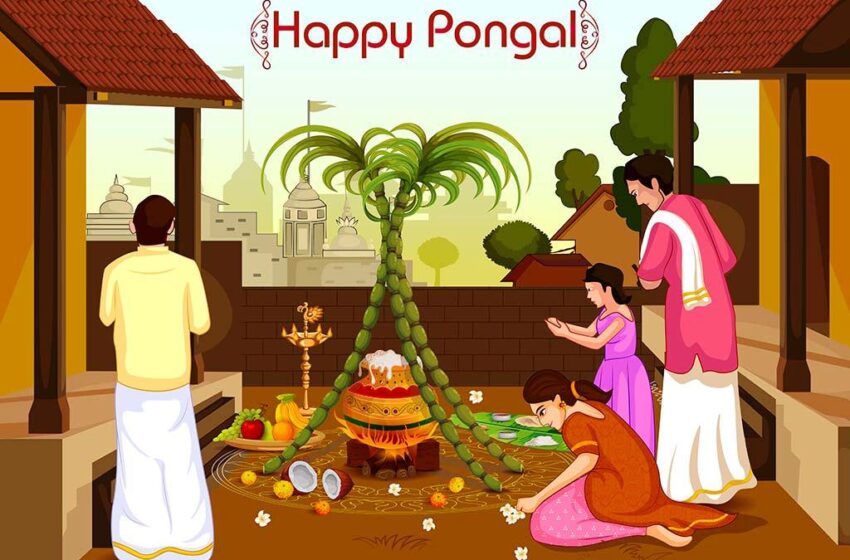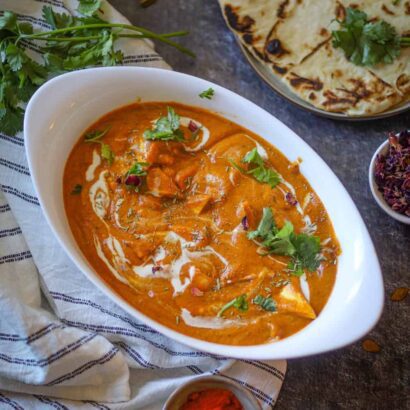Pongal Recipe: South Indian
Pongal is a beloved dish in South Indian cuisine for centuries. It’s a savory rice and lentil porridge that’s comforting and nourishing. This dish offers a mix of flavors that has won the hearts of many.
The pongal recipe here celebrates the traditional ways and ingredients. It’s perfect for breakfast, lunch, or dinner. It’s sure to become a favorite in your home.
This pongal dish is versatile and can be made to your liking. You can add different spices and toppings. Each bite of this South Indian comfort food is a treat.

Pongal Recipe
A traditional South Indian Pongal dish presented on a banana leaf, featuring creamy, spiced rice and lentils garnished with fried cashews, black pepper, and fresh coriander. The dish is set against a rustic wooden table, with a small bowl of coconut chutney and sambar on the side, surrounded by vibrant spices and herbs.
Key Takeaways
Pongal is a beloved savory rice and lentil porridge dish from South India.
This comforting and nourishing meal has been enjoyed for centuries, offering a harmonious blend of flavors.
The recipe showcases the authentic preparation methods and traditional ingredients of this South Indian delicacy.
Pongal is a versatile dish that can be customized with various spices and toppings to suit individual preferences.
Every bite of this South Indian comfort food promises a delightful culinary experience.
Pongal Recipe: A Beloved South Indian Delicacy
Pongal is a traditional South Indian dish with deep roots. It’s a staple for centuries, tied to the Pongal festival. This festival marks the end of winter and the start of the new year.
Origins and Cultural Significance
The dish comes from Tamil Nadu, where it’s very important. It’s made during the Pongal festival. This festival celebrates prosperity and the harvest.
The name “pongal” means “to boil over” in Tamil. It shows the dish’s traditional way of being made.
Key Ingredients and Variations
The basic pongal recipe has rice, moong dal, water, and spices. But, there are many ways to make it. Each style has its own twist.
Ven Pongal (savory pongal)
Chakka Pongal (sweet pongal)
Sambhar Pongal (pongal with a lentil stew)
By changing ingredients and spices, pongal can taste different. This makes it loved by many around the world.
Type of Pongal Key Ingredients Distinctive Flavor
Ven Pongal Rice, moong dal, ghee, cumin, black pepper Savory and comforting
Chakka Pongal Rice, jaggery, coconut, cardamom, saffron Sweet and aromatic
Sambhar Pongal Pongal, lentil-based sambhar stew, tempering Balanced blend of savory and tangy flavors
Step-by-Step Guide to Making Authentic Pongal
Making pongal, a beloved South Indian dish, is easy and rewarding. It’s all about preparing the ingredients right and cooking them just so.
First, wash and soak the rice and lentils in water. This makes them soft and brings out their flavors. Then, cook them together until they’re like a porridge. Add spices like cumin, black pepper, and asafoetida to make it taste amazing.
Finally, add ghee and top with cashews, raisins, and curry leaves. This makes the pongal truly special. It keeps its South Indian taste and texture just right.
FAQ
What is Pongal?
Pongal is a tasty rice and lentil porridge from South India. It’s a comforting dish loved for centuries.
What are the main ingredients in Pongal?
Pongal uses rice, moong dal, water, and spices. It’s a simple yet flavorful mix.
What are the different types of Pongal?
There are many Pongal types. Ven Pongal is savory, Chakka Pongal is sweet, and Sambhar Pongal comes with a stew.
What is the cultural significance of Pongal?
Pongal is very important in South Indian culture. It’s tied to the Pongal festival, celebrating the harvest season.
How is traditional Pongal prepared?
Making Pongal is easy. First, wash and soak rice and lentils. Then, cook them until they’re like porridge. Season with spices, ghee, and garnish with nuts and leaves.
What are some of the common variations in Pongal recipes?
Pongal can be made in many ways. You can change the rice to lentil ratio or add different spices. You can also use local ingredients for a unique taste.




2 Replies to “pongal 2024|Pongal Recipes”